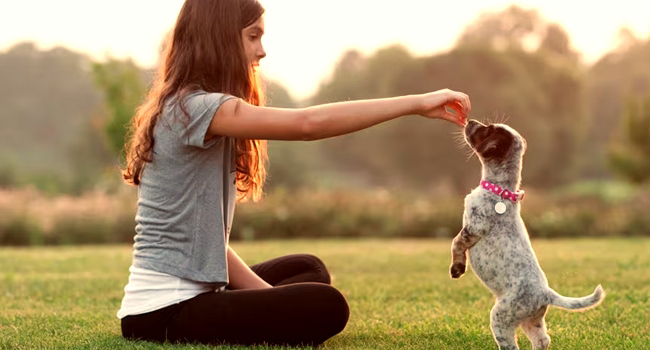Pet Training Made Easy: Obedience Tips and Tricks
Understanding the Basics
The Importance of Obedience & Training Method
Obedience is the cornerstone of a well-behaved pet. It ensures safety, harmonious living, and a happy pet-parent relationship. Every pet is unique, so understanding which training method suits your pet is crucial. We’ll delve into different approaches that cater to various personalities.
Essential Obedience Commands
Sit Down & Recall
These basic commands lay the foundation for a well-behaved pet. We’ll guide you through teaching your pet these commands effectively. Discover how to train your pet to come to you promptly, even when distractions abound.
Leave It and Drop It
Teaching your pet to let go of items they shouldn’t have is vital. We’ll show you how to do it without a struggle.
Positive vs. Negative Reinforcement
Understanding the nuances of positive and negative reinforcement is crucial. Positive reinforcement involves rewarding desired behaviours with treats or praise, while negative reinforcement entails removing something unpleasant when your pet obeys.
Age-Appropriate Training
Adapting your training approach to your pet’s age is essential. Puppies require basic obedience training, while adolescents may need more advanced training. Senior pets may need adjustments to accommodate their changing needs and abilities. Tailoring your methods to their age ensures the best results.
Overcoming Training Plateaus
Training plateaus can be frustrating, but they’re a natural part of the process. When your pet’s progress stalls, it’s essential to stay patient and adjust your training methods. Sometimes, a change in routine, additional challenges, or a fresh approach can help your pet break through these plateaus.
Addressing Common Training Challenges
Challenges in pet training are shared. Distractions, fear, or stubbornness can be roadblocks to progress. Recognizing and addressing these challenges with patience and creativity is essential.
Building Trust and Confidence
Trust and confidence are the cornerstones of practical pet training. By using positive reinforcement and clear communication, you can build trust with your pet, making them more receptive to your guidance. Confidence in your pet’s abilities is equally essential, empowering them to learn and perform obediently.
Adjusting Training Methods
Not all pets respond the same way to training techniques. Understanding your pet’s unique personality and needs is critical. Be flexible, experimenting with different methods until you find what works best for your furry friend. Adapting your training to suit them ensures a more prosperous and enjoyable experience.
Pet Training Myths Debunked
Many things could be improved about pet training that can hinder your progress. Debunking these myths can help you avoid common pitfalls and achieve better results. Separating fact from fiction empowers you to make informed decisions and create a more effective training plan for your pet.
The Emotional Connection
Practical training goes beyond obedience; it strengthens the emotional bond between you and your pet. A well-trained pet is more than a companion; it becomes a source of joy, comfort, and unwavering friendship.
Sustaining Obedience for a Lifetime
Obedience training is an ongoing process. Maintaining your pet’s obedience throughout life requires consistent practice, occasional refresher courses, and adapting to their changing needs. It ensures your pet remains well-behaved, making life with your furry friend a continuous joy and delight.
Training Tools and Equipment
To make training effective and efficient, you’ll need the right tools. Essential items include leashes, collars, clickers, and high-quality treats. These tools help reinforce positive behaviour and make the training experience more enjoyable for your pet.
Understanding Your Pet’s Body Language
Your pet communicates through body language, and it’s essential to understand their signals. Tail wagging, ear positioning, and eye contact all convey different emotions. By learning to interpret your pet’s cues, you can address their needs and feelings effectively during training.
Training in Real-Life Situations
Training within the controlled environment of your home is one thing, but applying obedience commands in real-life scenarios is equally crucial. Walks, trips to the park, and interactions with guests provide opportunities to reinforce your pet’s training and ensure they behave consistently in various situations.
Potty Training for Puppies
One of the most common training challenges is potty training for puppies. This process can be frustrating, but with patience and consistency, it becomes manageable. Establish a routine, provide ample opportunities for your puppy to relieve themselves outside, and reward triumphant outdoor bathroom breaks.
The Role of Consistency
Consistency is the backbone of successful obedience training. Use the same commands, gestures, and rewards consistently. Keep training sessions at regular times and durations. Consistency helps your pet understand what’s expected of them and reinforces good behaviour.
The Benefits of Obedience Training
Obedience training offers many benefits beyond just having a well-behaved pet. A trained pet is more welcome in social situations, and it can also prevent stressful encounters with other animals.
Overcoming Training Plateaus
Training plateaus can be frustrating, but they are a natural part of the process. Staying patient and adjusting your training methods can help your pet overcome these plateaus. Sometimes, it’s as simple as introducing new challenges or creating a more engaging training environment.
Addressing Common Training Challenges
Challenges like distractions, fear, or stubbornness are common in pet training. Recognizing and addressing these obstacles with patience, creativity, and understanding is essential. Overcoming these challenges builds your pet’s confidence and fosters a more profound connection between you.
Building Trust and Confidence
Building trust and confidence between you and your pet is fundamental to successful training. Positive reinforcement, clear communication, and consistent rewards are essential. When your pet trusts you and believes in their abilities, they become more receptive to training and eager to please.
Adjusting Training Methods
Not all pets respond the same way to training techniques. Understanding your pet’s unique personality and needs is crucial. Be adaptable and open to different methods, adjusting your approach as needed. Experimentation and flexibility lead to more successful and enjoyable training sessions.
Pet Training Myths Debunked
Many things could be improved about pet training that can hinder your progress. Debunking these myths can help you avoid common pitfalls and achieve better results. It’s crucial to have accurate information to create an effective training plan that caters to your pet’s specific needs.
The Emotional Connection
Practical training goes beyond obedience; it strengthens the emotional bond between you and your pet. A well-trained pet becomes not just a companion but a source of joy, comfort, and unwavering friendship.
Sustaining Obedience for a Lifetime
Obedience training is an ongoing process. Maintaining your pet’s obedience throughout life requires consistent practice and occasional refresher courses. It ensures your pet remains well-behaved, making life with your furry friend a continuous joy and delight.
Conclusion
To sum up, teaching a pet doesn’t have to be a complex undertaking. With the correct information and methods, you can make your pet a joyful, well-mannered friend. By understanding the basics, mastering essential commands, exploring advanced techniques, and addressing problematic behaviours, you’ll be well on your way to success.
FAQs
1. How long does it take to train a pet?
Training duration varies, but consistency and patience are essential. Some basic commands can be taught in a few weeks, while others may take several months.
2. Can I train an older pet?
Yes, you can train older pets, but it may require more time and patience. The key is to adapt your training techniques to their age and personality.
3. Is positive reinforcement the best method?
Positive reinforcement is often highly effective, but the best method depends on your pet’s personality and needs. It’s essential to tailor your approach accordingly.
4. What should I do if my pet doesn’t respond to training?
If your pet is unresponsive or displays challenging behaviour, consider seeking professional help. A trained dog or cat behaviourist can provide valuable guidance.
5. How can I maintain my pet’s training in the long term?
Consistent practice and periodic reinforcement of training are vital to maintaining your pet’s obedience. Continue to use the learned commands in your daily interactions.



Comments
Post a Comment